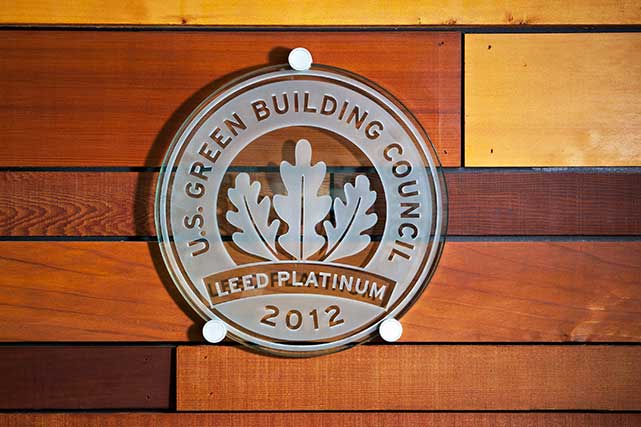More buildings than ever now carry the label green or sustainable. According to McGraw Hill Construction, 41 per cent of all non-residential building starts in 2012 were green, compared to 2 per cent in 2005. More than 3.6 billion square feet of building space have now been certified by LEED, the leading green building certification regime.
The U.S. Environmental Protection Agency (EPA) defines the act of sustainable building as “the practice of creating and using healthier and more resource-efficient models of construction, renovation, operation, maintenance and demolition.” Yet the weight placed on protecting occupant health is often overlooked when discussing the merits of green building construction.
“The benefits related to reduced energy and water consumption are well-documented, but the potential human health benefits of green buildings are only recently being investigated,” explains Dr. Joseph Allen from the Harvard TH Chan School of Public Health. With humans spending around 90 per cent of their time indoors, buildings can have a significant impact on human wellbeing.
In an attempt to quantify the health effects of green buildings, Allen and other environmental health researchers at the Chan School decided to analyze 15 previous studies on the subject. These studies looked at a total of 69,000 buildings in over 150 countries.
Their review, published earlier this month in the journal Current Environmental Health Outcomes, found a positive correlation between green buildings and healthier occupants. “Overall, the initial scientific evidence indicates better indoor environmental quality in green buildings versus non-green buildings, with direct benefits to human health for occupants of those buildings,” says Allen.
Occupants of green buildings are in general more satisfied with indoor air quality, their workspace, building cleanliness and maintenance in general. The indoor environmental quality measured in green buildings is better compared to typical buildings and, as a result, occupants have less exposure to allergens, pollutants and environmental contaminants such as the harmful gas formaldehyde found in some building materials. Green building occupants in one study for instance reported lower absenteeism and fewer lost work hours because of asthma and allergies.
On the whole, the better indoor environmental quality translates into occupants’ reporting that they suffer from fewer symptoms of sick building syndrome and that they enjoy better physical and mental health. Working in a green building is also associated with higher productivity, lower employee turnover and a decrease in the length of open staff positions. Green hospitals benefit patients and the medical staff working in them alike. One study, for instance, noted improved quality of care, fewer blood stream infections, improved record keeping and a lower number of deaths among patients.
Building acoustics were consistently the one aspect that did not score better in green buildings, as participants in several studies were not satisfied with the noise levels experienced.
While the researchers were encouraged by the results, they were quick to caution that these findings remain far from conclusive. The majority of the data garnered for the 15 studies was self-reported through subjective questionnaires and surveys to those working in green buildings around the world.
To ensure more objective data is collected in the future, they suggest the use of mobile health sensors to monitor and gather information about the health performance of green buildings.







